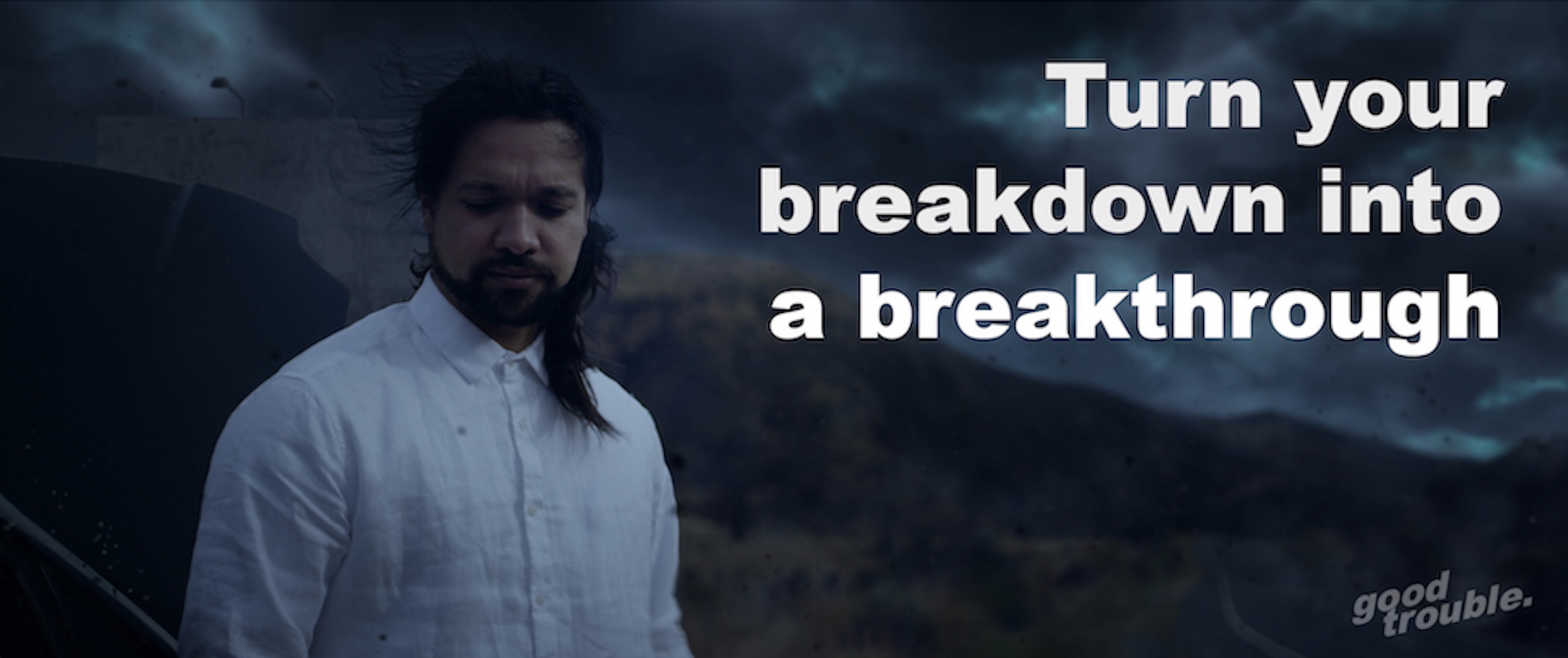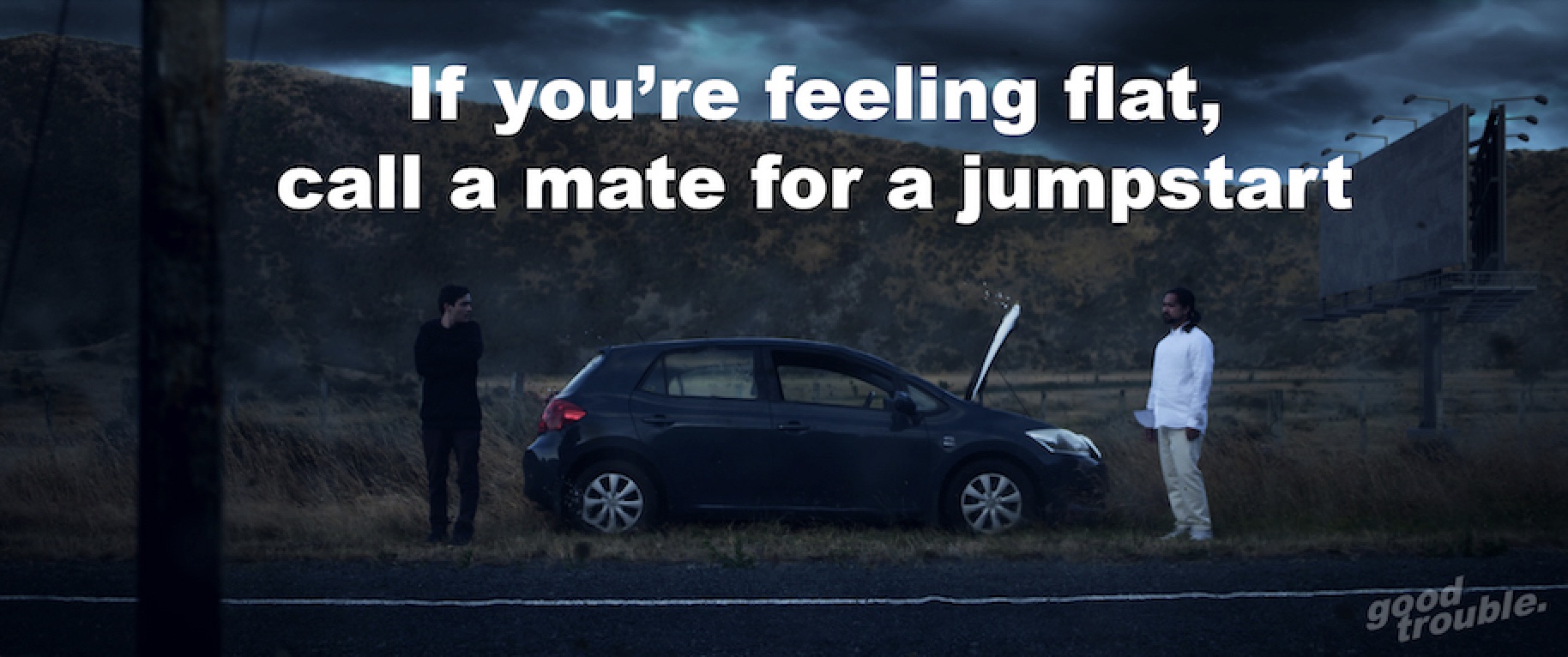Creative couple Alex Johnson and Ramon Telfer launch ‘Jumpstart’ mental health campaign
Co-written and co-directed by creative couple Alex Johnson and Ramon Telfer, Jumpstart introduces a fresh take on the mental health conversation, reimagining depression and anxiety to showcase a healthy dialogue between two men. Rather than follow a traditional approach to mental health awareness, the film uses the metaphor of a car breaking down to bring depression to life.
After ten years of witnessing Telfer’s dad grapple with Bipolar disorder, and coping with their own mental health challenges, Johnson and Telfer have found themselves drawn to the intersection of creativity and wellbeing. They believe storytelling and creativity are powerful tools to help reshape how we talk about mental health.
The film was created as free content for individuals and organisations to share during NZ Mental Health Awareness Week 27 September – 3 October 2021.
The film will be launched on Facebook and Youtube under Goodtrouble on Monday 27 September at 10am.
Johnson and Telfer hope the film will help stimulate better conversations around mental breakdowns and reaching out for help.
For more information please use the contact form at: goodtrouble.co.nz/contact
Says Johnson: “After ten years of witnessing Ramon’s father’s heartbreaking grapple with bipolar, learning to cope with our personal mental health challenges and attempting to navigate our fragmented health system, Ramon and I have found ourselves drawn to the intersection of creativity and mental health. We believe storytelling and creativity play a vital role in the Aotearoa mental health conversation.
“We were motivated by the statistics that state nearly one-third of Kiwis experience mental distress in their lifetime, and that men are 3-4 times more likely to die by suicide. We decided that we wanted to create a short film/ mental health campaign with a simple call to action that would resonate with this demographic.
“We’ve always been driven to talk about mental health differently, more casually and in a way that associates our negative emotions with areas of life that don’t carry a sigma. Our ambition is to provide a new perspective that empowers people to take positive action.
“We started our creative process with the call to action – call a mate. Improving your mental health is a lifelong journey that requires a holistic approach. However, taking the first step is difficult and overwhelming. We considered a variety of different call to actions, but “call a mate” stood out as a simple, manageable and non-confronting task for our target audience.
“We next considered the narrative vehicle (mind the pun!) to communicate our call to action. The idea of a car breakdown was one that stood out to us because it’s an accessible concept that doesn’t carry a negative sigma. This analogy linked perfectly to our call to action and allowed us to draw parallels to asking a mate for a jumpstart.
“Our greatest challenge was to create a dialogue that was simultaneously dark and vulnerable to illustrate the world and signs of depression, colloquial and light-hearted to normalise the conversation, and also stern and supportive to assert that “it’s going to take some real mahi to turn this breakdown into a breakthrough”. After 17 script iterations, several walking-workshops and a trip to Mahia we managed to lock in a script that achieved this balance.
“Our actors, Tim MacDonald and Manual Soloman, were huge contributors to the success of the project. We started auditions with an open-mind, but were looking for actors who could bring the characters to life and communicate the lines with delicacy and serenity. We were also interested in finding actors between 20-30, who were ethnically ambiguous but leaning towards Māori. This was important to us because Māori/Pacific people have higher suicide rates than Europeans and are less likely to reach out for help. We wanted our target audience to feel represented and empowered by our actors.
“Landscape was another important element to the narrative. We needed the environment to be a character in itself, so it was important that the film location contributed to protagonists feelings of emptiness, hopelessness and isolation. We initially had the desert road in mind but due to budget restraints we hunted for a similar landscape that was closer to home. Wainuiomata Coast road was the perfect fit, because it provided a large barren, basin that felt vast and empty. Additionally, the geography of the location creates a wind tunnel that (despite being a challenge for our sound recordist, Joel Anscombe-Smith) provided the drama and intensity that the scene requires.
“We worked with Mike Bloemendal to create a dark, ruminating environment that simulated a depressive headspace. Vocal effects put emphasis on key dialogue and highlight swirling the notation of thoughts.
“We worked closely with Cacper Cias to reimagine depression as a landscape. This landscape was named ‘Rock Bottom’ – a place where no one wants to find themself in. This vital layer is what made the invisible visible. We used CGI to decay our environment so not only we see the character breaking down – but the world around him.”



1 Comment
Absolutely fantastic. Well done for depicting the subjective and personal turmoil into something we can understands and relate to.